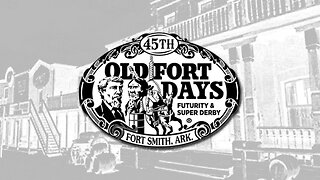B17 Bomber & Blast From The Past Drag Races 2023 Helena, Montana #whyhelenamt
Video and pictures of flying fortress in the Helena Montana area.
Take off and flight during the Blast from the past drag races at the airport.
The B-17 Flying Fortress Sentimental Journey will be in Helena, MT June 20-25, 2023. A one of a kind collection of the rarest historic military planes in the world will be near you. Come see them up close and personal, and better yet fly in one!
The Pearl Harbor attack of December 7, 1941, finally brought the United States into the war and production of the B-17 rapidly increased. By July 1942, the US began forming the Eighth Air Force in Britain, equipped with B-17Es. On August 17, 1942, eighteen United States Army Air Force (USAAF) B-17s carried out a bombing raid on the railway yards at Rouen in France.
Production of the B-17F was undertaken by Boeing, Vega and Douglas, the BVDs as they were called (the same abbreviation as the underwear company), but new modifications were taking their toll in airspeed. There were more than four hundred modifications on the B-17F. The only noticeable outside difference was the full blown Plexiglass nose. The B-17F, now armed with eleven 0.50-cal. guns, could only reach 299 mph (481 km/h) and the landing speed was up to 90 mph (144 km/h)! Service ceiling was 37,500 ft. (11,430 m) and range 2,880 miles (4,634 km). It took twenty-five and a half minutes to climb to 20,000 ft. (6,096 m). The BVD companies produced 3,400 B-17Fs.
The B-17F model can be distinguished from the E and G by the lack of superstructure supporting the Plexiglas nose dome.
On January 27, 1943, B-17s of the USAAF made their first attacks on Germany at the port of Wilhelmshaven. The attack was carried out by the 91st, 303rd, 305th and 306th Bomb Groups. Initially, casualties were very high because they attacked during daylight hours to achieve greater accuracy. Also proper formation flying, to enable a group of airplanes to defend each other with crossfire, (the legendary box formation) had not yet been formulated. Also the B-17F lacked adequate defense against a head-on attack.
In head-on attacks, Luftwaffe fighters would porpoise towards the B-17, beginning with a slight dive and then coming up and raking across the underbelly of the airplane and repeating this maneuver against bombers bringing up the rear. This tactic relegated the upper turret, waist and tail guns as ineffective.15
In March 1943, some relief was obtained when the P-47 Thunderbolt showed up. The P-47 could escort the bombers partially towards their targets and meet them again on the return trip. But Messerschmitt Bf 109s and Focke-Wulf Fw 190s waited for the bombers until their escorts turned back.
On October 19, 1943 during the second raid on Schweinfurt, the Luftwaffe shot down 60 and damaged 138 of the 291 B-17s dispatched, with a loss of 650 airmen. And on March 6, 1944 during a raid on Berlin, 69 B-17s were lost along with 17 fighters with a loss of 701 men. However, the Luftwaffe lost 160 aircraft. Despite such losses for the Eighth Air Force, not one mission ever turned back.16
By September 1943, the Flying Fortress showed its final shape during firepower tests on the XB-40, a modified B-17F with the advantage of a "chin" turret. The Bendix turret held two 0.50 caliber guns, which increased the armament to thirteen guns. The XB-40 didn't carry any bombs but was heavily armed and had extra armor for the crew. It was much heavier than the F Model and also slower. The idea was to escort the bombers during raids, but after the bombers released their loads, the XB-40 could not maintain formation and the bomb squads would have to slow down. The XB-40 was abandoned, but the Bendix chin turret was adapted to the B-17G.
The B-17G was produced in greater numbers than any other single model and more B-17Gs were lost than any other model. The most obvious difference was the installation of the Bendix chin turret installed under the nose. With the turret under the nose, the view through the Plexiglass nose was now unobstructed for the gunner. The chin turret also had no adverse effect on the aerodynamics of the airplane, and it finally produced the protection that was needed against head-on attacks. Another major change was the installation of the Cheyenne tail turret. The gun had a larger field of fire and the ring-and-bead site was replaced with a reflector site. On the late G models, the waist gunner windows were staggered so the gunners wouldn't get in each other's way. The radio operator's gun on the upper hatch was eliminated since it was considered of low value, because of its poor vantage point.
-
 6:28
6:28
JoBlo Horror Originals
1 day agoWe Remember Roger Corman
30.5K3 -
 5:29
5:29
Michael Heaver
1 day agoDutch Finally Make ASTONISHING Decision
26.2K28 -
 30:42
30:42
Southwest Mushrooms
1 day ago $0.01 earnedMushroom Mycelium Tissue Culturing in Liquid and Agar Media | Southwest Mushrooms
19.2K3 -
 3:47
3:47
tksgarage
1 day agoTim Kuniskis Out As Dodge CEO!
15.6K3 -
 27:52
27:52
The Bitcoin Family
1 day ago $0.04 earnedBITCOIN 66K, NEXT TARGET IS CLEAR!!!
12.2K8 -
 12:06
12:06
Crypto Crew University
1 day ago $0.02 earnedWARNING: BITCOIN JUST ENTERED RED ZONE ON WAVE TREND – DO THIS NOW
9.12K1 -
 56:53
56:53
LFA TV
16 hours agoRenata Moon | UNCOMMON SENSE IN CURRENT TIMES | 5.18.24 @5pm EST
26.1K25 -
 2:42:39
2:42:39
Jewels Jones Live
1 day agoCOHEN: Perjurer of Congress Lies Again | A Political Rendezvous - Ep. 77
36.4K58 -
 3:08:47
3:08:47
Total Horse Channel
11 hours agoOld Fort Days Futurity & Super Derby
48K2 -
 LIVE
LIVE
Major League Fishing
2 days agoLIVE Tackle Warehouse Invitationals, Heavy Hitters, Day 1
68 watching